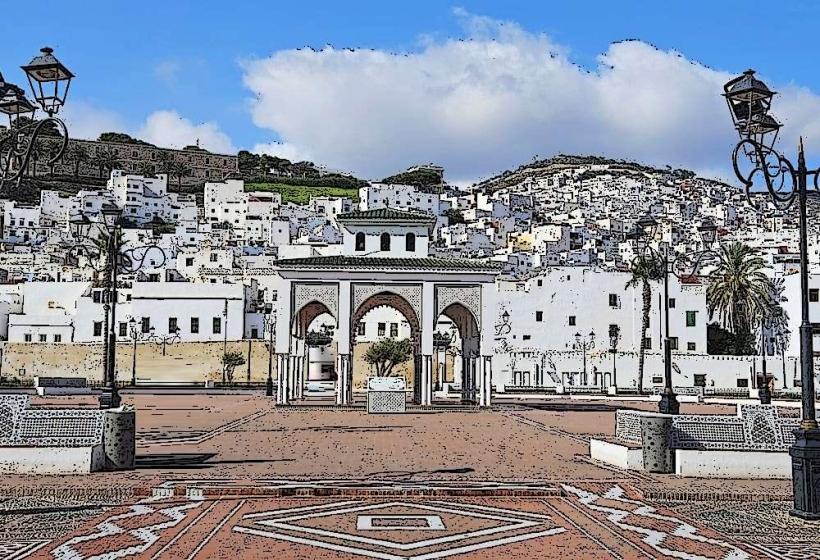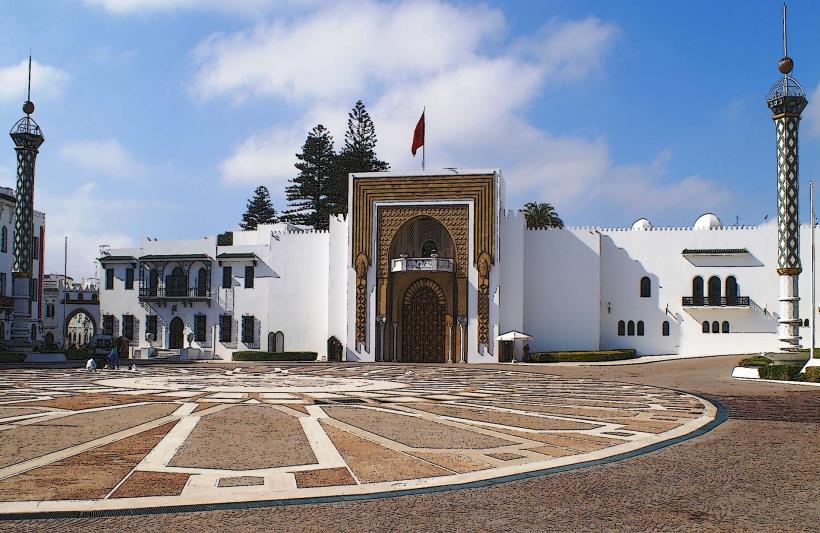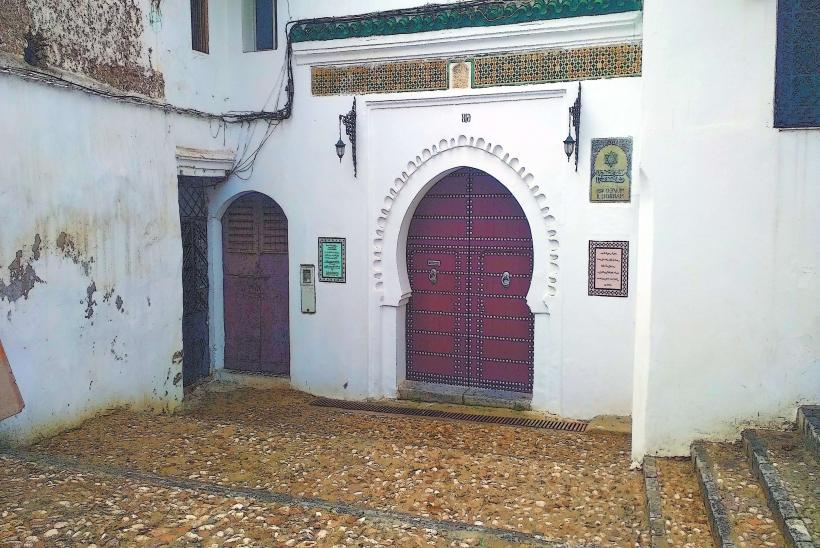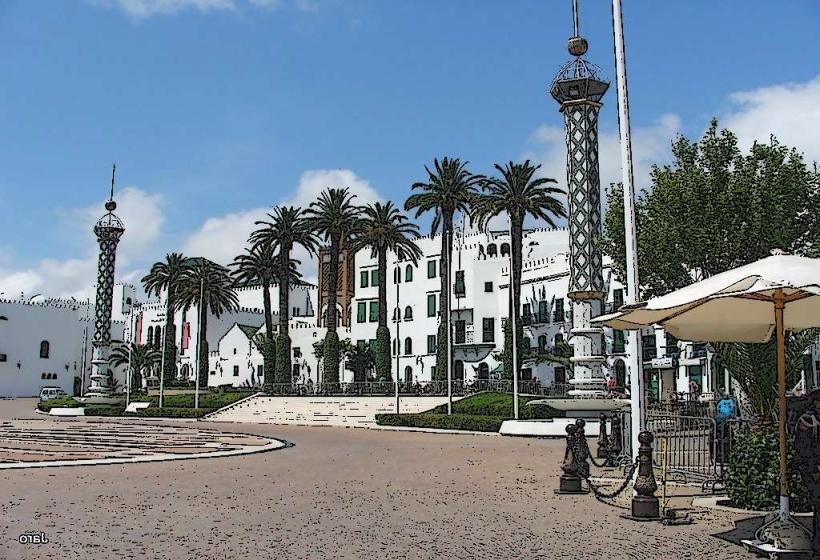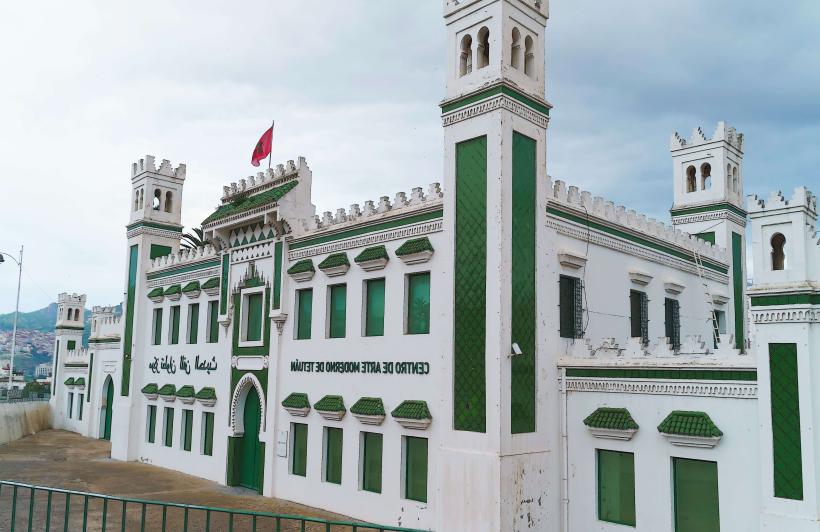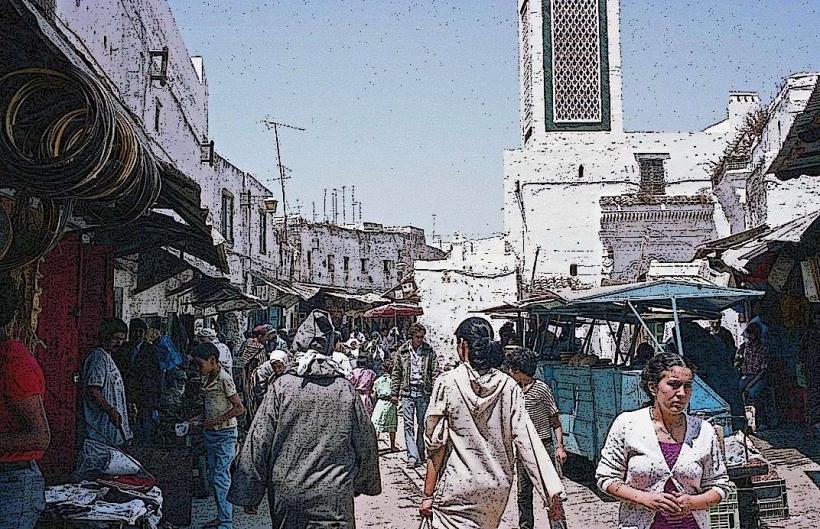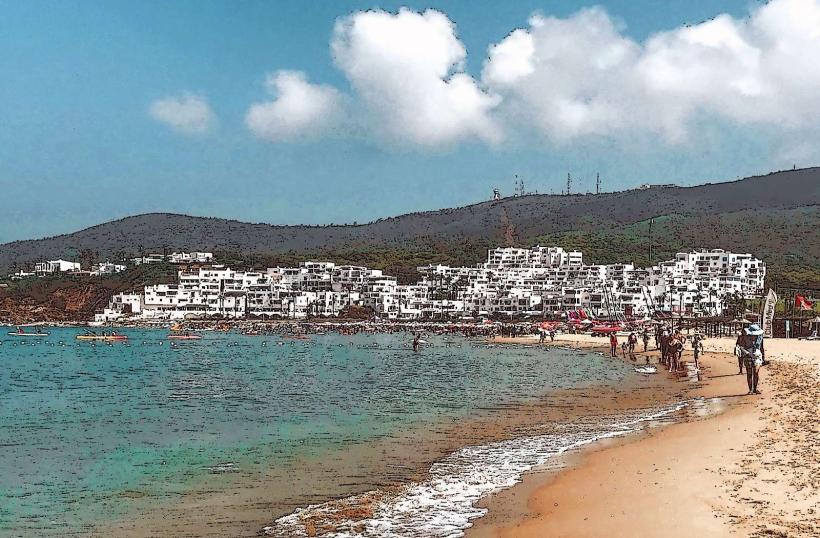Information
Landmark: Archaeological Museum of TetouanCity: Tetouan
Country: Morocco
Continent: Africa
Archaeological Museum of Tetouan, Tetouan, Morocco, Africa
The Archaeological Museum of Tetouan is one of Morocco's most significant cultural institutions, offering a deep dive into the history of the region from ancient times through to the Islamic era. Located in the heart of Tetouan, this museum holds a vast collection of artifacts that reflect the rich and diverse history of the area, including Roman, Islamic, and pre-Islamic periods. Here’s a detailed overview of the museum:
1. Historical Context and Establishment
The Archaeological Museum of Tetouan was founded in 1939, during the period of the Spanish Protectorate in Morocco.
It was established to preserve and display the archaeological wealth of the region, much of which was being unearthed during the time of Spanish rule.
The museum’s building is a traditional Moroccan structure, which is architecturally representative of the Spanish-Moorish influence on Tetouan, a city that blends Andalusian and Arab-Berber architectural styles.
2. Collections and Exhibits
The museum's exhibits span multiple eras, showcasing artifacts from the Paleolithic to the Islamic period. Some of the most significant collections include:
Roman Artifacts
Roman Mosaics: One of the museum's highlights is its impressive collection of Roman mosaics. These mosaics were originally discovered in Lixus, an ancient Roman city located near the mouth of the Loukkos River.
The mosaics depict scenes of daily life, mythological themes, and geometric patterns, offering a glimpse into Roman art and culture in North Africa.
Punic and Mauritanian Artifacts
The museum contains items from the Punic-Mauritanian period, particularly from the ancient city of Tamuda (modern-day Tetouan). These include funerary steles and sculptures, which provide insights into the burial practices and artistic traditions of the region.
Coins, pottery, and other objects from this era offer a glimpse into the economic and social life of the period.
Islamic Artifacts
Islamic Steles: The museum has a collection of funerary steles dating back to the 16th and 17th centuries, reflecting the Islamic heritage of the region. These steles were used to mark graves and often include inscriptions and decorative motifs.
There are also numerous Islamic pottery pieces, tools, and everyday objects that offer a window into daily life in Morocco during the Islamic period.
Islamic Calligraphy: The museum also displays calligraphic works, showcasing the artistry and reverence for writing in Islamic culture.
Prehistoric and Ancient Artifacts
The museum houses a collection of prehistoric tools, such as stone axes, flint tools, and other implements used by early human settlers in the region.
The Paleolithic and Neolithic collections give visitors insight into the earliest human activity in northern Morocco.
Ethnographic and Cultural Artifacts
A selection of traditional Moroccan crafts can also be found, showcasing woodwork, metalwork, and ceramics from Tetouan and the surrounding regions.
3. Exhibition Halls and Layout
The museum is organized into different exhibition halls that are dedicated to specific historical periods and themes. Each hall provides visitors with contextual information through informative plaques and displays.
In addition to its permanent exhibitions, the museum hosts temporary exhibits that focus on specific aspects of Moroccan history, culture, or art, often showcasing contemporary archaeological finds or specific historical themes.
4. Outdoor Exhibits
The outdoor area of the museum features several Roman amphorae (large ceramic storage jars), as well as Islamic funerary steles and mosaics. This outdoor space provides a more open, reflective atmosphere for visitors to appreciate the scale of ancient artifacts.
There are also sculptures and remnants of Roman buildings displayed outdoors, offering an additional layer of engagement with the ancient world.
5. Visiting Information
Address: The museum is located at 2, rue Ben H’saïn, Tetouan, Morocco.
Opening Hours:
Monday: 09:00 – 16:00
Tuesday: Closed
Wednesday to Sunday: 09:00 – 16:00
Admission Fee: The entry fee is around 10 Moroccan Dirhams (approximately €1 or $1), making it an affordable destination for both tourists and locals.
Photography: Photography is generally allowed inside the museum, though visitors should confirm any specific restrictions upon arrival.
6. Guided Tours and Languages
Guided Tours are available in multiple languages, including English, French, and Arabic, which enhances the experience for international visitors. Knowledgeable guides provide in-depth information about the museum’s collections, as well as the historical context of Tetouan and the region.
7. Cultural and Historical Significance
The Archaeological Museum of Tetouan is an important institution for preserving the cultural heritage of northern Morocco. It offers valuable insights into the region's ancient civilizations, including the Roman and Islamic periods, as well as the Punic-Mauritanian civilizations that predate them.
Tetouan itself is a city with a rich history, having been influenced by Andalusian, Berber, and Islamic cultures. The museum serves as an anchor for understanding how these cultures interacted and shaped the region over the centuries.
The museum is a key stop for anyone wanting to understand the archaeological and historical narrative of Tetouan, with the collection providing a deep dive into the pre-Islamic, Roman, and Islamic pasts of Morocco.
8. Nearby Attractions
Royal Palace of Tetouan: Just a short walk from the museum, this palace is an example of Moroccan royal architecture and is a symbol of Tetouan's significance in the broader context of Morocco’s monarchy.
Kasbah: The Kasbah of Tetouan is another nearby historical site, offering a glimpse into the city's old town and its military past.
Medina of Tetouan: A UNESCO World Heritage Site, the Medina is rich in traditional architecture and craftsmanship, reflecting the blending of Andalusian and Moorish influences.
9. Visitor Experience
Peaceful Atmosphere: The museum provides a calm and informative experience, ideal for those interested in history, archaeology, and culture.
The museum's collection is well-curated and presented in a way that balances educational content with visual appeal. It is less crowded compared to museums in larger cities, making it a more relaxed experience.
In summary, the Archaeological Museum of Tetouan is a cultural treasure trove for anyone interested in the ancient and medieval history of northern Morocco. With its wide range of artifacts from Roman, Punic, and Islamic periods, the museum offers valuable insights into the rich cultural heritage of Tetouan and its surrounding region. It is a must-visit destination for anyone traveling to Tetouan who seeks to understand the city's deep historical roots.

